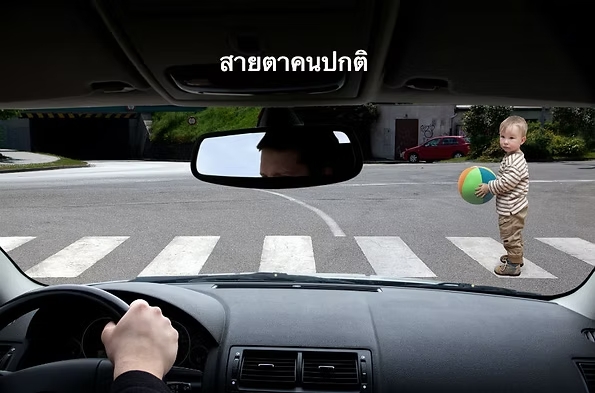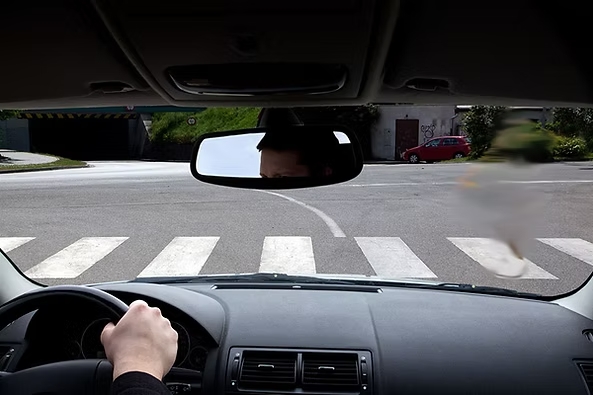- Everyday 9.30 AM – 6.30 PM


Glaucoma By Assoc.Prof.Dr. Manchima Makornwattana
Broadcast on the Young@Heart program, airing on Thai PBS, on October 31, 2015.
Glaucoma is a group of eye diseases that gradually damage the optic nerve at the back of the eye. This can lead to a gradual loss of vision without the patient being aware of it and may eventually result in blindness.
The damage to the optic nerve in glaucoma is often associated with high intraocular pressure, which results from an imbalance in the production and drainage of the fluid inside the eye (aqueous humor). When there is excess production of this fluid or improper drainage, it increases the pressure within the eye.
Glaucoma can be divided into two main types:
Additionally, there are other less common types of glaucoma:
There are also cases of glaucoma caused by other diseases or conditions that increase intraocular pressure and damage the optic nerve, such as:
Other specific types include:
Open-angle glaucoma is the most common type of glaucoma, accounting for more than 90% of cases. It occurs when the drainage system of the eye doesn’t work as efficiently as it should (similar to a clogged drain). The disease progresses slowly, and patients typically don’t experience eye pain or notice vision loss in the early stages. However, the increasing intraocular pressure gradually damages the optic nerve, and vision loss occurs slowly, often without the patient being aware.
Closed-angle glaucoma occurs in individuals whose iris (the colored part of the eye) is positioned too close to the drainage angle of the eye. In certain situations, the iris may move and block the drainage angle (similar to blocking a drain), leading to a rapid increase in intraocular pressure if the drainage angle becomes 100% obstructed. This is called “acute angle-closure glaucoma,” which is a medical emergency that can lead to blindness. Closed-angle glaucoma can also develop gradually in a chronic form, where the patient may not notice any symptoms until it progresses or an acute glaucoma episode occurs.
Normal-tension glaucoma is a type of glaucoma where the intraocular pressure (IOP) is not abnormally high, but the optic nerve is still being damaged. The exact cause of this condition is not well understood, and it may involve factors other than high IOP, such as poor blood flow to the optic nerve or other underlying health conditions.
Congenital glaucoma is a form of glaucoma that occurs in infants or young children. It is typically caused by an abnormality in the drainage system of the eye present at birth, which prevents the proper flow of aqueous humor and leads to elevated intraocular pressure, potentially causing damage to the optic nerve.
Patients with acute glaucoma typically experience:
Chronic glaucoma often has no warning signs. People with the condition are usually unaware of it until it becomes severe, leading to significant vision loss.
Since glaucoma often develops without noticeable symptoms, the best prevention method is to visit an ophthalmologist for a comprehensive eye examination. This can help detect glaucoma as well as other eye conditions. For individuals with narrow drainage angles in the eye, who are at risk of developing acute glaucoma, the doctor may recommend laser treatment to open the drainage pathways as a preventive measure.
To diagnose glaucoma, the doctor will perform several tests, including:
These tests help the doctor evaluate eye health and detect any early signs of glaucoma.
There are 3 main treatment methods for glaucoma:
These treatments help manage the condition and prevent further damage to the optic nerve.
Laser treatment for glaucoma involves two main procedures:
Surgical treatment for glaucoma is typically performed when eye drops or laser treatment are no longer effective in lowering intraocular pressure. There are two main types of glaucoma surgery:
The severity and progression of glaucoma vary from patient to patient. Some individuals may experience a faster worsening of the disease than others. Therefore, the best treatment for each patient can differ, ranging from simply monitoring the condition without medication to undergoing surgery.
In most cases, glaucoma can be controlled with daily use of eye drops. If eye pressure is not adequately controlled with medication, or if the patient experiences difficulties or discomfort with eye drops, the doctor may consider laser treatment. Surgery to lower intraocular pressure is typically only recommended when neither eye drops nor laser therapy effectively control the pressure.
Currently, there is no cure for glaucoma. However, the progression of the disease can be stopped or slowed down, and the remaining vision of the patient can be preserved, preventing it from worsening from the point of initial diagnosis. Glaucoma patients typically need to use eye drops regularly to control intraocular pressure throughout their lives. Treatments like laser therapy or surgery may help reduce or even eliminate the need for eye drops in some cases.
Currently, there are no herbs or vitamins that have been medically proven to treat glaucoma. The standard treatment for glaucoma focuses on lowering intraocular pressure, usually through medications (eye drops), laser therapy, or surgery. Always consult with a healthcare professional for the best approach to managing the condition.
Eye massage is not an accepted standard treatment. There is no proven evidence that it is safe or effective. It should not be used as a substitute for standard treatments that have been medically proven to be beneficial, such as eye drops, laser treatments, or surgery. Eye massage to temporarily reduce intraocular pressure may only be beneficial for certain glaucoma patients, such as when performed temporarily by an ophthalmologist to help reduce intraocular pressure after surgery to open the drainage pathways in the eye. However, it should always be used in conjunction with medications or other standard treatments.
Currently, there are about 120 ophthalmologists in Thailand who specialize in glaucoma. These doctors are skilled at accurately diagnosing and monitoring changes in the disease, selecting the most appropriate medication for each patient, and offering treatments beyond eye drops, such as laser therapy or surgery, when necessary. The most appropriate treatment for each glaucoma patient may vary, depending on the individual case.
The cost of treating glaucoma with medication is the lowest per treatment. Laser treatment is more expensive but may offer better control of intraocular pressure, potentially allowing patients to reduce or stop using eye drops, thereby lowering the risk of side effects and requiring fewer doctor visits. Surgery is the most expensive treatment for glaucoma and is usually only performed when necessary, i.e., when controlling intraocular pressure with medication or laser treatment is not sufficient.
Most patients with glaucoma who follow proper and consistent treatment can continue to read and see well throughout their lives. The majority of patients who become blind from glaucoma are those who visit the doctor too late or do not follow the doctor’s advice regularly.
Once you know you have glaucoma, the most important thing you can do to preserve your vision for as long as possible is to follow your glaucoma doctor’s treatment plan and recommendations consistently, and never stop taking your medication on your own.
No, not all people with glaucoma have high intraocular pressure. Some people with glaucoma may have normal eye pressure, but the doctor may detect damage to the optic nerve. When testing with a visual field test, blind spots may appear in the patient’s field of vision.
Some eye drops used to treat glaucoma may cause the following side effects:
Patients should consult an ophthalmologist immediately if they experience side effects from using the medication.
Currently, there are efforts to find alternative methods for treating glaucoma aside from reducing eye pressure. These treatments are collectively known as neuroprotection, which aims to protect the optic nerve from being damaged by glaucoma. However, the results so far have not been very promising. As for alternative treatments, such as using herbs, dietary supplements, or vitamins, there is no medical evidence to support their effectiveness in treating glaucoma. While some may think that trying these methods won’t hurt, spending time on treatments that are not beneficial may prevent patients from receiving the proper treatment, which could lead to permanent vision loss.
About us
We provide specialized eye care services by ophthalmologists with expertise and experience, using state-of-the-art medical equipment and standardized surgical rooms
Links
Contact us